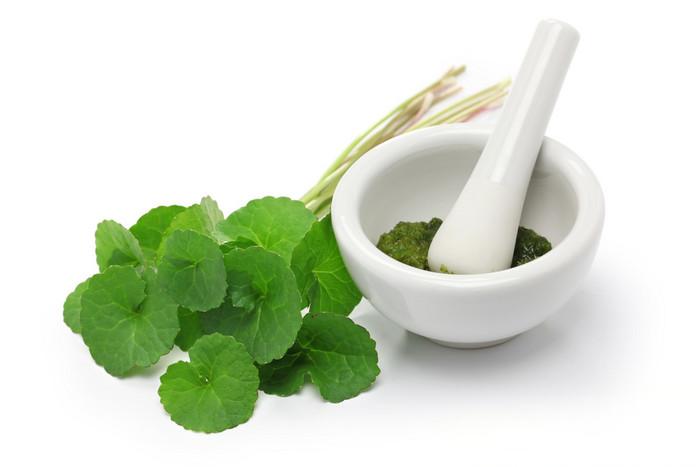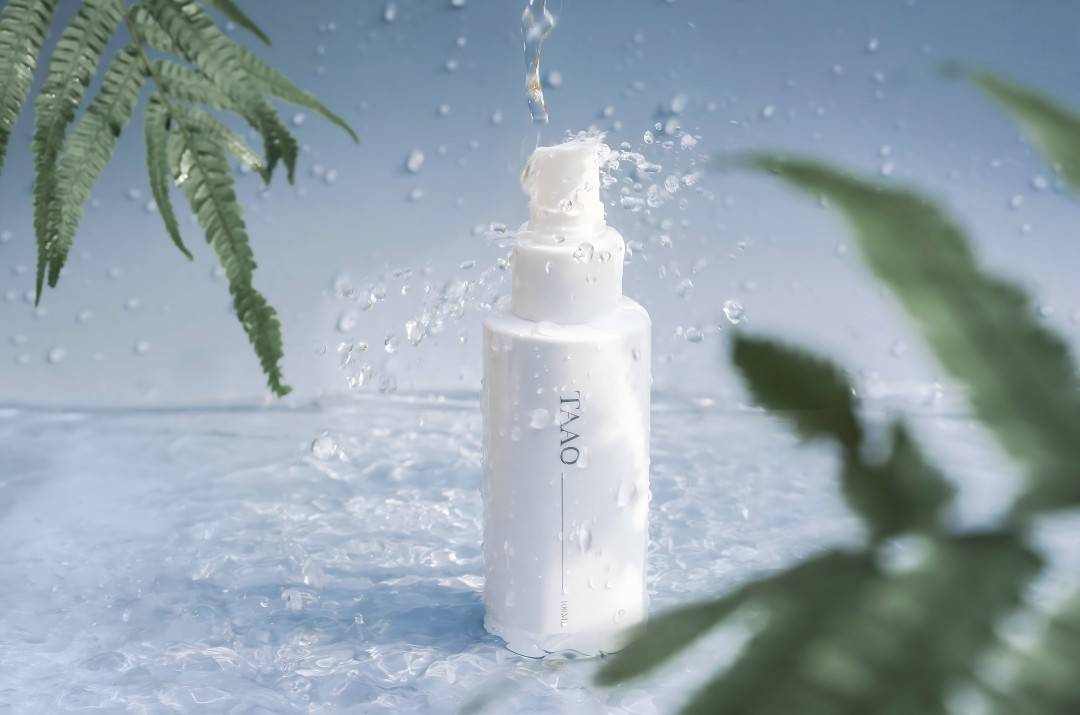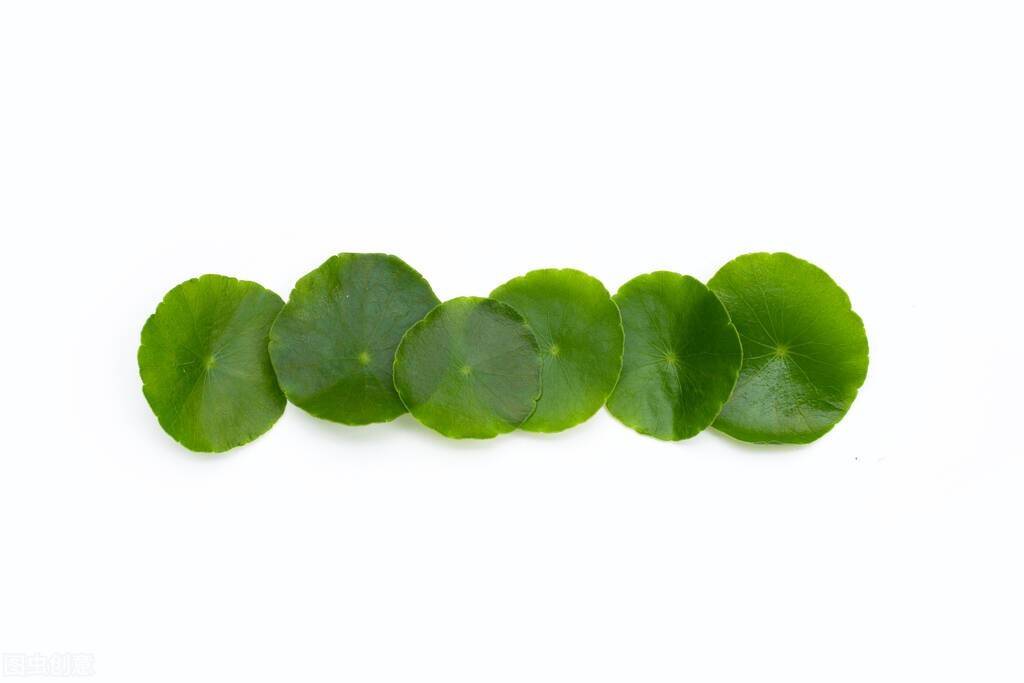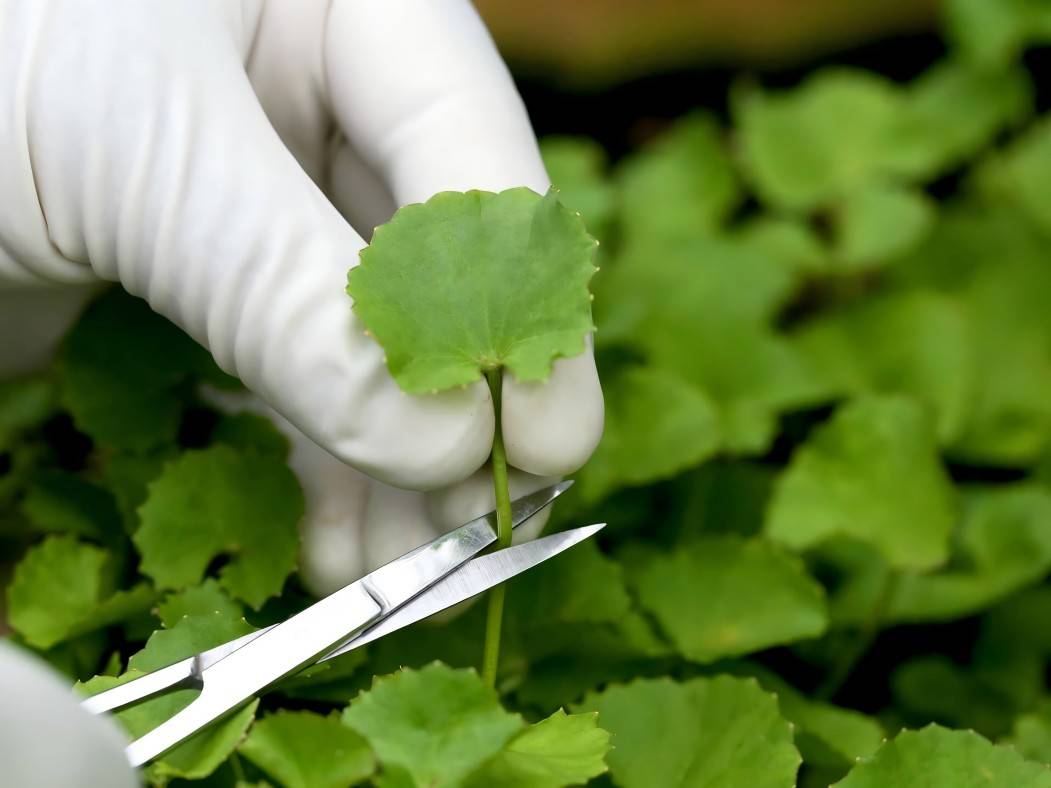How to Extract the Active Ingredient in Centella Plant?
Centella asiatica is the dried whole herb or whole herb with roots of the plant Centella asiatica (L.) Urban (family Apiaceae). It is also known as Luo De Da, Ben Da Wan and Ban Bian Qian. It is widely distributed in the areas south of the Yangtze River basin, and the whole herb is used in medicine. It was first recorded in the Divine Husbandman's Classic of the Materia Medica and is classified as a medium-grade herb. It is cold in nature, bitter and pungent in taste, and has the effects of clearing away heat and dampness, detoxifying and reducing swelling. Clinically, it is used for treating bruises, infectious hepatitis, epidemic cerebrospinal meningitis, etc.
The Centella genus (Centella) has about 20 species worldwide, mainly distributed in the tropical and subtropical regions of the northern and southern hemispheres. It is mainly produced in South Africa, India, Sri Lanka, Malaysia, Indonesia, Australia, and also distributed in Japan. In China, only one species of Centella asiatica is produced, which is widely distributed in East China, South China, Central and South China, and Southwest China, below 2000 m above sea level, in fertile, damp places such as roadsides, ditches, fields, and grasslands. Centella asiatica is mostly composed of triterpenoid compounds, of which asiaticoside and madecassoside are the main active ingredients due to their rich pharmacological activity and wide range of clinical applications. Currently, extensive research has been conducted both domestically and internationally on Centella asiatica and its active ingredients. This article provides a review of recent research.

1 Extraction and purification
1.1 Water extraction
Centella asiatica is rich in pentacyclic triterpenoids, such as asiaticoside and madecassoside. Asiaticoside and madecassoside are considered to have strong pharmacological activity and are used as indicators to evaluate the quality of Centella asiatica. Lu Maofang et al. used orthogonal experiments to optimize the extraction process of Centella asiatica, with the yield of asiaticoside as the evaluation index. The results showed that the optimal conditions for the extraction process were as follows: extract twice with water, the first time with 10 times the amount of water for 2 h, and the second time with 8 times the amount of water for 1.5 h. 5h. The optimal conditions for the purification process are: 0.4 mL/g chitosan, a 1.2:1 liquid concentration ratio, and a flocculation temperature of 70°C. This method saves raw materials, shortens working hours, reduces costs, and is conducive to industrial mass production. Kim WJ et al. [1] used subcritical water to extract asiatic acid and asiaticoside from Centella asiatica. Subcritical water is depressurized and cooled, and the subcritical water changes to water, which increases its polarity and reduces the solubility of asiatic acid and asiaticoside, causing them to precipitate from the solution. The particle size of the precipitated asiatic acid is larger than that of asiaticoside, and they can be separated by selecting an appropriate filter membrane based on the difference in particle size.
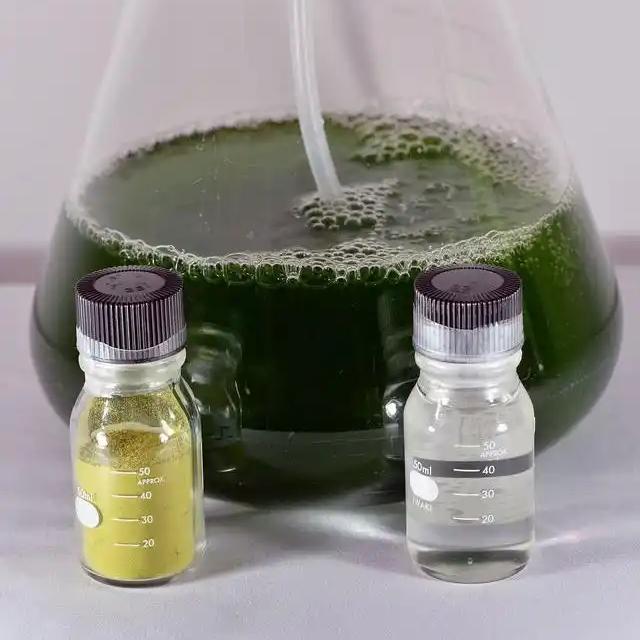
1.2 Enzyme extraction
Han Wei et al. [2] used an enzymatic method to extract asiaticoside from Centella asiatica. The type and amount of enzyme, the material-to-solvent ratio of Centella asiatica and water, the initial pH of the enzymatic solution, the enzymatic temperature, and the enzymatic time. The optimal process parameters for enzymatic hydrolysis were selected using an orthogonal experimental design, namely: a mass ratio of cellulase to substrate Centella asiatica of 1:50, a material-to-liquid ratio of (mass ratio of Centella asiatica to solvent water) 1:25, pH 6. 0, enzymatic hydrolysis temperature 40 °C, enzymatic hydrolysis time 1.5 h. Compared with the traditional extraction method, enzymatic extraction is a good method because it is faster, has milder process conditions, and a higher yield. It not only helps to maintain the original properties of the active ingredients, but also reduces energy consumption.
1.3 Purification method
Using preparative high-performance liquid chromatography, two components, asiaticoside and madecassoside, can be simultaneously isolated and purified from Centella asiatica extract, with purities of over 98% [3]. Jia GT et al. [4] used HPD100 as the column packing material, the sample solution concentrations of asiaticoside and madecassoside were 0.98 and 1.85 mg/mL, respectively. The adsorption and elution flow rates were both 2 BV/h. After the sample was adsorbed, it was washed with water for 4 BV, then eluted with 50% ethanol at a volume of 1 BV. The results showed that the content of madecassoside increased from 3.9% to 39.3%, and that of asiaticoside increased from 2.0% to 21.5%.
2 Analytical research
2.1 Mass analysis
The triterpenoids asiaticoside and madecassoside are the main active ingredients of Centella asiatica, and HPLC is often used for their determination. The current research status of Centella asiatica quality analysis by domestic and foreign scholars is as follows.
Zhang FL et al. [5] used the HPLC-ELSD method with a mobile phase of water (0.01% trifluoroacetic acid, v/v): acetonitrile (1. 0% methyl-tri-butyl-ether, 0.01% trifluoroacetic acid, v/v) (78:22) as the mobile phase, a flow rate of 1.0 mL/min, a column temperature of 30 °C, a drift tube temperature of 40 °C, and a nitrogen pressure of 3. 5 × 105 Pa. The contents of asiaticoside, madecassoside and asiatic acid in Centella asiatica were simultaneously detected under chromatographic conditions with a mobile phase of 8:22), a flow rate of 1.0 mL/min, a column temperature of 30°C, a drift tube temperature of 40°C, and a nitrogen pressure of 3.5 × 105 Pa. Pan J et al. [6] used an RP-HPLC diode array detector method using a mobile phase of methanol: water (65:35, v/v) with the addition of β-cyclodextrin, the isomers hydroxysanguinarine and terminolic acid were successfully separated and determined at pH 4. and found that the resolution increased with the addition of β-cyclodextrin. Rafaman-tanana M. H. et al. [7] used HPLC-UV to simultaneously determine the contents of asiaticoside, madecassoside, asiatic acid and madecassic acid in Centella asiatica.
In addition to triterpenoids, flavonoids are also the main active ingredients in Centella asiatica. Wang Rong et al. [8] used quercetin and kaempferol as controls, respectively, and determined the total flavonoids in Centella asiatica whole herb using ultraviolet spectrophotometry at 320 nm. This method is simple to operate, accurate, highly sensitive, and reproducible, and is a practical method for determining the total flavonoid content in Centella asiatica whole herb. In addition, Pamita B. et al. [9] quantitatively analyzed the two flavonoids apigenin and rutin in the Centella asiatica methanol extract using high-performance thin-layer photodensitometry.
2.2 In vivo analysis
Saponin components are the main active ingredients of Centella asiatica. However, due to the difficulty of absorption in the intestine and the low bioavailability, they have a long residence time in the intestine and interact with the intestinal flora, making it less likely that they will show pharmacological activity in vivo as the original form. Weng Jun [10] and others studied the metabolic effects of asiaticoside on the intestinal flora of rats in vitro and in vivo. The results showed that asiaticoside can be metabolized in the intestine, and the metabolism occurs in a stepwise manner, with the glycosyl groups being hydrolyzed one by one until they are all converted to aglycones. Centella asiatica saponin and its metabolites enter the blood circulation and work together to exert their pharmacological effects. Huang Huaipeng [11] and others used an in vivo intestinal perfusion test in rats to determine the amount of centella asiatica saponin using HPLC, and studied the effects of drug concentration and absorption site on the absorption of centella asiatica saponin. The results showed that a certain range of drug concentrations had no effect on Ka and Papp of centella asiatica saponin, and the absorption mechanism is passive diffusion. Xiao Chun Zheng et al. [12] used pre-column derivatization RP-HPLC with UV detection to quantitatively analyze the content of asiatic acid in the plasma of beagle dogs. P-toluidine was used to derivatize the sample before analysis, and the results were accurate and can be used for the pharmacokinetic study of asiatic acid.
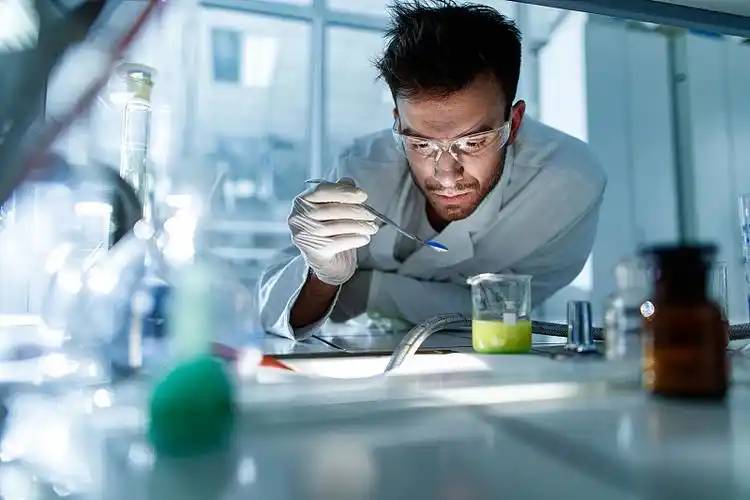
3 Pharmacological effects
3.1 Antioxidant effects
Centella asiatica has the function of regulating the activity of peroxidase and preventing oxidative stress. Its extract can not only regulate endogenous oxidative stress damage in the brain, but also regulate neurotoxic-induced oxidative stress. Subhasree B et al. [13] evaluated the antioxidant activity of Centella asiatica and speculated that the free radical scavenging function is the mode of action of Centella asiatica in the prevention and treatment of diseases such as arthritis, breast cancer, and atherosclerosis. Zainol MK et al. evaluated the antioxidant activity of the roots and leaves of Centella asiatica and the phenolic compounds named CA01, CA05, CA08 and CA11, and compared them with α-tocopherol (a natural antioxidant) and butylated hydroxytoluene (BHT, a synthetic antioxidant).
3.2 Anti-inflammatory effect
Hydroxycentella asiatica can reduce the high level of COX-2 expression and PGE2 content in the soft tissue of the ankle joints of collagen-induced arthritis (CIA) mice, and reduce the levels of the inflammatory factors TNF-α and IL-6 in the plasma. and increase the level of IL-10, indicating that madecassoside can effectively inhibit the inflammatory response in CIA mice [14]. Liu Mei et al. [15] found in their study of the effect of madecassoside on CIA that madecassoside can inhibit the proliferation of synoviocytes in CIA mice and reduce the infiltration of inflammatory cells. In addition, madecassoside can reduce the level of lgG in the serum, inhibit the delayed-type hypersensitivity reaction of the ears of CIA mice and the CII-induced lymphocyte proliferation response. The results show that madecassoside has a significant protective effect on CIA mice, and the mechanism may be related to regulating abnormal cellular immune responses. Madecassoside is one of the higher-content components in Centella asiatica and can be considered the main active ingredient in Centella asiatica for the treatment of rheumatoid arthritis.
3.3 Effects on the nervous system
Centella asiatica extract can affect the amyloid cascade in the hippocampus, alter the pathology of β-amyloid protein in the brains of PSAPP mice, and regulate the oxidative stress response that accompanies neurodegenerative changes in Alzheimer's disease. Mohandas Rao KG et al. used fresh centella asiatica leaf juice at a dose of 4 mL/kg to feed 7-day-old rats for 4 to 6 weeks, found that the apical dendritic spine and secondary dendritic spine of the hippocampal CA3 region had increased significantly. The increase in dendritic spines not only indicates an increase in the range of connections between neurons, but also has the effect of amplifying postsynaptic potentials and regulating synaptic efficacy. Therefore, the increase in dendritic spines not only means an increase in contact points, but more importantly, it also means that the integration of many afferent signals by neurons is more complicated. Centella asiatica extract can improve spatial learning and memory, possibly by increasing the dendritic branching of hippocampal CA3 neurons.
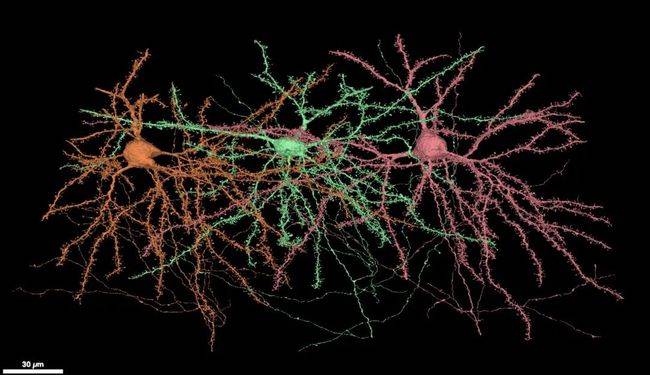
Phospholipase A2 (PLA2) is a family of enzymes involved in lipid metabolism. Increased PLA2 activity in the brain can change the properties of neurons, such as signal transduction, neurotransmitter synthesis and release, etc., leading to disorders such as schizophrenia and epilepsy. Centella asiatica water extract has an effective inhibition rate of 97% and 77% for non-calcium-dependent phospholipase A2 (iPLA2) and cytosolic phospholipase A2 (cPLA2), respectively, which can effectively reduce the activity of PLA2 in the brain with few toxic side effects. It is a good PLA2 inhibitor that can be used to treat schizophrenia, epilepsy, Parkinson's disease and other diseases [16].
3.4 Effect on the skin system
Centella asiatica can treat many skin diseases because its main components promote wound healing by enhancing the synthesis of collagen in wound tissue and angiogenesis. Asiaticoside and madecassoside are the main active ingredients in centella asiatica. Madecassoside can reduce the infiltration of inflammatory cells and promote the proliferation of dermal fibroblasts to form epithelium. In high doses (12, 24 mg/kg), it reduces the levels of NO and malondialdehyde (MDA) in burned skin tissue and increases the levels of glutathione (GSH) and hydroxyproline. In addition, centella asiatica extract can promote angiogenesis in vivo and has been found to stimulate endothelial cell growth in vitro, thereby promoting wound healing [17]. Low doses of asiaticoside (10-10 to 10-14 w) can increase the expression of MCP-1 and IL-1β in macrophages in burned tissue, thereby stimulating the production of vascular endothelial growth factor (VEGF), accelerating angiogenesis in burned skin, and promoting wound healing [18]. Haftek et al. found that a combination of 0. 1% madecassoside and 5% vitamin C can effectively improve skin aging.
Ermertcan et al. [19] found that compared with the collagenase group, the group treated with Centella asiatica extract had stronger immunoreactivity for inducible nitric oxide synthase (iNOS) and transforming growth factor β (TGF-β), but weaker immunoreactivity for laminin and fibronectin, so in the early stages of wound healing, the collagenase ointment is more effective than the Centella asiatica extract.
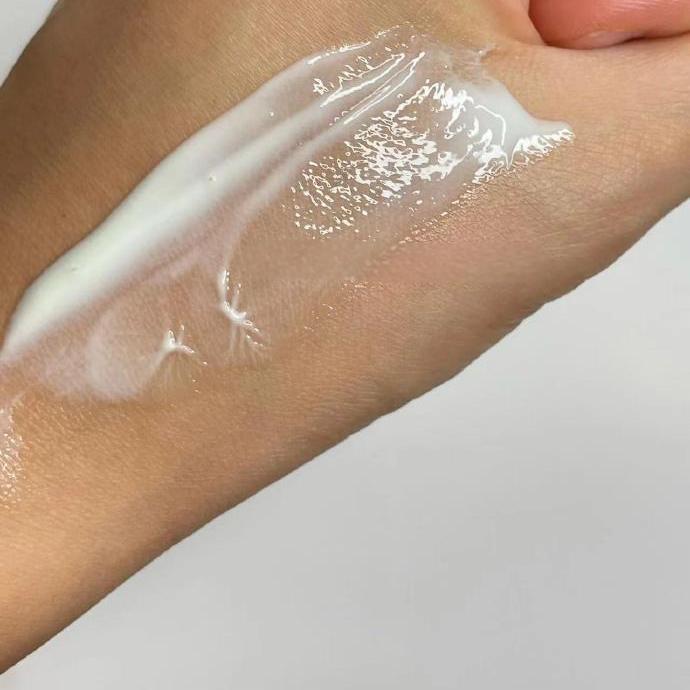
3.5 Other effects
Hydroxy asiaticoside can significantly reduce the degree of CRP elevation and the MDA content in MIRI rabbit serum, increase SOD activity, and at the same time inhibit myocardial cell apoptosis by upregulating Bcl-2 protein expression. The anti-myocardial infarction effect of madecassoside may be related to its anti-inflammatory activity, antioxidant activity, induction of Bcl-2 expression upregulation, and inhibition of myocardial cell apoptosis [20].
Centella asiatica extract can reduce the toxic damage induced by cyproterone acetate (CPA) in human lymphocytes. Studies have found that centella asiatica extract can significantly reduce the chromosomal mutation rate and sister chromatid exchange rate, thereby reducing the toxicity of CPA.
Centella asiatica acid has a neuroprotective effect on mice with persistent cerebral ischemia, can reduce blood-brain barrier permeability, and reduce mitochondrial damage. It is a good candidate drug for the treatment of cerebral ischemia.
Studies using an acute arthritis model induced by yeast polysaccharides in animals have found that Centella asiatica can dose-dependently inhibit PG release and reduce NO production. This not only reduces inflammatory cell infiltration and joint swelling, but also inhibits cartilage degradation [21].
In addition, Centella asiatica also has antibacterial, anti-ulcer, anti-venous insufficiency, anti-renal interstitial fibrosis and other effects. These rich pharmacological activities make Centella asiatica and its active monomeric components have broad prospects for development and application.
Reference:
[1] Wan Joo Kim,Jaehoon Kim,Bambang Veriansyah,et al. Extrac- tion of bioactive components from Centella asiatica using subcritical water[J]. The Journal of Supercritical Fluids,2009,48 : 211 - 216 .
[2] Han Wei, Chen Huidan, Fan Liang, et al. Enzyme extraction of asiaticoside [J]. Journal of Nanjing University of Technology: Natural Science Edition, 2009, 31 (3): 18-22.
[3] Gao Mingzhe, Yuan Xiaoyan, Xiao Hongbin. Preparation of high performance liquid chromatography method for the separation and purification of asiaticoside and madecassoside from Centella asiatica extract [J]. Chromatography, 2008, 26(3): 362-365.
[4] Jia Guangtao,Lu Xiuyang. Enrichment and purification of made- cassoside and asiaticoside from Centella asiatica extracts with macroporous resins[J ]. Journal of Chromatography A ,2008, 1193 : 136 -141 .
[5] Zhang Fenglun ,Wei Yingjie,et al. Simultaneous quantitation of three major triterpenoid glycosides in Centella asiatica extracts by high performance liquid chromatography with evaporative light scat- tering detection [J]. Biomed Chromatogr,2008,22 : 119 -124 .
[6] Pan Jian,Kai Guiqing,et al. Separation and Determination of Ma- decassic Acid inExtracts of Centella asiatica Using High Perform- ance Liquid Chromatography with β - Cyclodextrin as Mobile Phase Additive[J]. Chin J Chromatogr,2007,25 (3 ) : 316 - 318 .
[7] M. H. Rafamantanana,E. Rozet,G. E. Raoelison et al. An im- proved HPLC -UV method for the simultaneous quantification of triterpenic glycosides and aglycones in leaves of Centella asiatica (L. ) Urb (APIACEAE)[J]. J Chromatogr B. 2009,03,018 .
[8] Wang Rong, Li Yunxiang, Cai Lingyun, et al. Study on the extraction process and content determination of Centella asiatica total flavonoids [J]. Spectroscopy Laboratory, 2009, 26(3): 544-549.
[9] Pamita Bhandari,Neeraj Kumar,Ajai P. Gupta,et al. A rapid RP -HPTLC densitometry method for simultaneous determination of major flavonoids in important medicinal plants[J]. Short Com- munication,2007,30 : 2092-2096 .
[10] Weng Jun, Lv Qiujun, Tian Ying, et al. Metabolic transformation of asiaticoside by intestinal flora [J]. Chinese Herbal Medicine, 2006, 37 (7): 1008-1011.
[11] Huang Huaipeng, Liu Caixia. In vivo intestinal absorption dynamics of asiaticoside in rats [J]. Chinese Herbal Medicine, 2008, 39(7): 1056-1058.
[12] Zheng Xiaochun,Wang Shenghao,et al. Determination of asiatic acid in beagle dog plasma after oral administration of Centella asi- atica extract by precolumn derivatization RP-HPLC[J]. Journal of Chromatography B,2009,877 : 477-481 .
[13] B. Subhasree,R. Baskaret,R. Laxmi Keerthana,et al. Evalua- tion of antioxidant potential in selected green leafy vegetables [J]. Food Chemistry,2009,01,029 .
[14] Li Hongzhong,Gong Xia,Zhang Li,et al. Madecassoside atten- uates inflammatory response on collagen - induced arthritis in DBA /1 mice[J]. Phytomedicine,2008,11,002 .
[15] Liu Mei,Dai Yue,Yao Xiujuan. et al. Anti-rheumatoid arthritic effect of madecassoside on type II collagen -induced arthritis in mice[J]. International Immunopharmacology,2008,8 : 1561 - 1566 .
[16] Barbosa N. R. ,Pittella F. ,Gattaz W. F. et al. Centella asiatica water extract inhibits iPLA2 and cPLA2 activities in rat cerebel- lum[J]. Phytomedicine,2008,15 : 896-900 .
[17] Liu Mei,Dai Yue,Li Ying,et al. Madecassoside Isolated from Centella asiatica Herbs Facilitates Burn Wound Healing in Mice [J]. Planta Med,2008,74 :809-815 .
[18] Yoshiyuki Kimura ,Maho Sumiyoshi ,Kei -ichi Samukawa ,et al. Facilitating action of asiaticoside at low doses on burn wound repair and its mechanism[J]. European Journal of Pharmacolo- gy,2008,584 : 415-423 .
[19] Ermertcan,Inan,Ozturkcan,et al. Comparison of the effects of collagenase and extract ofCentella asiatica in an experimental model of wound healing:An immunohistochemical and histopatho- logical study[J]. Wound Repair and Regeneration,2008 ,16 : 674-681 .
[20 ] Bian Guangxing ,Li Guigui ,Yang Yun ,et al. Madecassoside Reduces Ischemia-Reperfusion Injury on Regional Ischemia In- duced Heart Infarction in Rat[J]. Biol Pharm Bull ,2008,31 (3) : 458-463 .
[21] Hartog A,Smit HF,van der Kraan PM,et al. In vitro and in vivo modulation of cartilage degradation by a standardized Centella asiatica fraction[J]. Exp Biol Med ( Maywood ) ,2009 ,234 (6) : 617-623 .


 English
English French
French Spanish
Spanish Russian
Russian Korean
Korean Japanese
Japanese